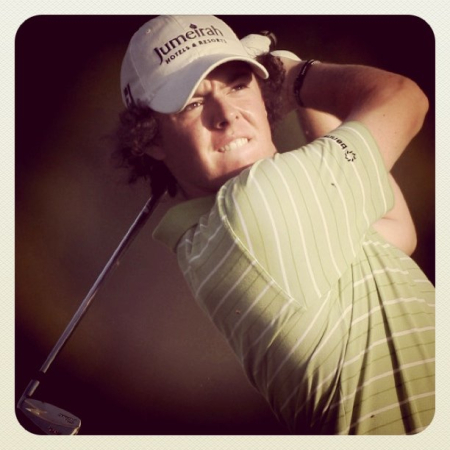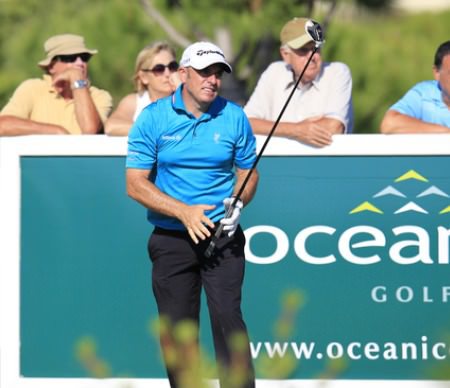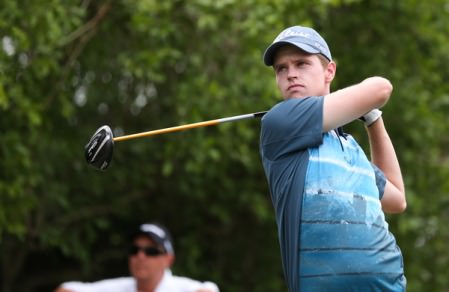Golf's global era well and truly upon us

A still from the new European Tour advert, which captures that familiar moment in which sports fans become so captivated by the action that time stands still and nothing else matters except seeing what happens.
One of the strengths of the European Ryder Cup team is the sense of it being one big family pulling in the same direction for the same goal.
It’s only a slight exaggeration but it holds true and the same could be said for European Tour itself, which, while it has grown beyond the wildest imaginings of those who set it up in 1972, is still a business of handshakes and relationships on a global stage.
The appointment of a man from outside the golfing family as Chairman Board of the European Tour’s Board of Directors in January this year, David Williams, has led to some swift changes, the most notable of which has come in the form of the announcement of the planned early retirement of the CEO, George O’Grady.
A Singapore-born Anglo-Irishman, O’Grady had indicated in recent years his wish to go on until the 2018 Ryder Cup in France but he will now step aside earlier than planned and ease his successor, whoever he or she may be, into the role over the next 18 months.
Whether he was ousted or went of his own accord will become clearer in time but while O’Grady will take up a role as president of international relations for the Tour as far as the 2016 Olympic Games, it’s clear that the European Tour is moving into a new era that is as close as a World Tour as we are likely to get and a young, dynamic business leader is now required.
The golfing landscape has changed utterly since the European Tour was formed in 1972 featuring 23 events in nine European countries for total prize money of €350,000.
Today there are 48 tournaments in 26 different destinations on five continents with total prize money of more than €133 million. In short, it’s a global game played by a small coterie of players for huge rewards provided by some of the biggest companies in the world with the help of many governments.
martin Kaymer in another still from the European Tour's latest advert
From its heartland of Great Britain and Ireland and western Europe, the Tour spread its wings into North Africa and then to South Africa, the Far East, the Middle East and now China in search of global markets and sponsorship.
What was once a case of “Follow the sun” is now a question of following the money and even the insular US PGA Tour has embraced the concept and seen the benefit of expanding globally.
The Americans now run the PGA Tour Canada, PGA Tour Latinoamérica and PGA Tour China and stage an event in Kuala Lumpur in late October, clashing with the first of the European Tour’s Final Series events in Shanghai.
As the little brother to the PGA Tour, the European Tour is constantly fighting to retain, or at least attract, its leading players and sell them to their sponsors around the world.
There’s only one Rory McIlroy, one Ernie Els, and one Sergio Garcia, to name three European Tour stalwarts and finding swathes of the season where they can showcase this talent for weeks at a time is the European Tour’s biggest challenge.
The early season events in the Gulf States, the run in the summer close to The Open and the season-ending Final Series in China, Turkey and Dubai are Europe’s mainstays.
But as Graeme McDowell and promoter and agent Andrew “Chubby” Chandler pointed out in Dubai at the end of last season, getting the top players to remain loyal to Europe is the challenge.
“There are windows of opportunity in the schedule for the European Tour to create high level events like those four Final Series events,” McDowell said. “But there needs to be a couple more little runs like this one on the schedule.
“Are we moving towards more of a global tour? Perhaps. I don’t know. It is a very difficult task that the new CEO has ahead of him. But I think it is doable and I think the players are passionate about getting something together and making it work.
“We owe the European Tour a lot. This is where we have cut our teeth. Opening up American to the Europeans in the 1980s for the Lyles, the Faldos, the Seves, paved the way for us. These guys were the pioneers but the relationship Europe now has with PGA Tour has almost created the problem by giving us the opportunities to be out there.”
With McIlroy winning the Open, the US PGA and the WGC-Bridgestone Invitational and Germany’s Martin Kaymer taking the US Open and the PGA Tour’s flagship Players Championship, Europe clearly has some trump cards, quite apart from its dominance of the Ryder Cup over the past 20 years.
Big management and promotion agencies such as International Management Group (IMG) now do little work on European soil and concentrate their energies on China and the Far East and efforts are being made to restore the European Tour’s attraction to sponsors in Great Britain, especially England, which has just one strokeplay event on the schedule.
"The Tour is in a state of transition and nothing is happening right now,” said Chandler, head of International Sports Management (ISM). “One of the problems they have got to understand is that every young player now wants a PGA Tour card.
“And every young player who gets one looks at playing the same schedule. That means they are all available for the same tournaments in Europe and thats; the way it has to be. The tour is not run for the guys who finished 22nd at the Q-School. It’s run to have the top players available in Europe as often as possible.
“What Rory is doing with the Irish Open is fantastic - getting Rickie to player. But shouldn’t the Tour be asking Rickie to play at Wentworth in their main event, the BMW PGA, the week before Ireland? If he’s coming over, they should be asking him to play.
“If they can identify these weeks and create €3m- €4m events at the right times, players will choose to play. That’s why the Final Series works. Okay, we didn’t have Justin Rose in the Turkish Airlines Open. But we had Henrik Stenson and Sergio Garcia.
“We have to try and fit in with what the PGA Tour does. And there are some obvious gaps. The Europeans play in America in February, March and April after the desert tournaments. Once it gets to the end of May, let them come back to Europe to play until the Bridgestone Invitational in August. Then wave goodbye during the FedEx Cup and get then back again at the end of September.
Speaking before the British Masters had been confirmed, Chandler said: “If you can always get two or three of the top eight players you are doing alright. The European Tour has never really had a strategy and if they had a strategy to get more of the good players to play good tournaments at the times they are available to play, then it will work.”
With British Masters now being revived and slotted in after the Alfred Dunhill Links with Ian Poulter, Luke Donald, Lee Westwood and Justin acting as alternating hosts, the Tour will boost its impact on European soil once more.
As Chandler pointed out: “If you get Poulter and Westwood in a British tournament and can get Luke Donald or Justin Rose now and again, it’s another good tournament. That’s what Ireland is doing. Ireland will always have Rory, Padraig, Darren and Graeme. It survives.
“I think the European Tour has done very well to achieve what they have achieved with the little resources they have. With a little more planning and a little more strategy, it could get better.”








